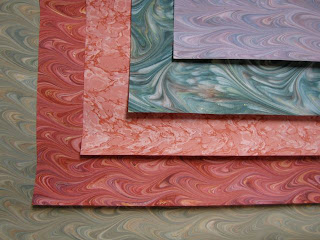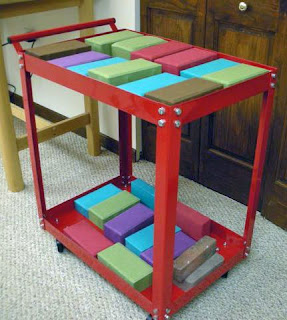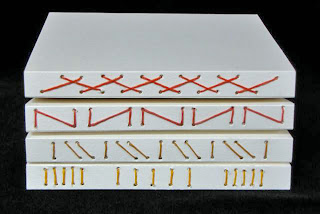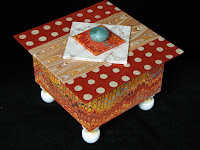






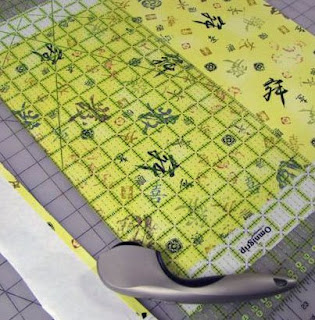

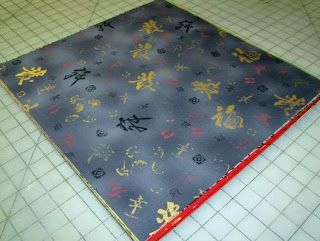
I start with fat quarters of 100%, good quality quilting fabric. Iron the fabrics with plenty of steam. If you have a project size in mind, cut the fabric about 2 inches larger than you need on each dimension. Otherwise, just cut the fat quarter into 2 or 3 pieces.
You'll need Yes paste, stiff brush (a large stencil brush is shown here), large acrylic brayer, large piece of acrylic for a work surface, artist's tape, and backing paper. I like to use ArtKraft white paper, on a 24" wide roll. Cut the paper a few inches larger than the fabric on each dimension.
Thin the Yes paste before using. Scoop out half the (8 oz.) jar and transfer to another container. Add 1/4 cup water to the paste and stir until it is the consistency of fresh honey. If more water is needed, add it one tablespoon at a time. This will cover about 50, 9" x 12" pieces.
Tape the paper to the acrylic sheet with artist tape. Apply a thin but even layer of paste. Gently lower the fabric down onto the glued surface, and smooth out the air bubbles, first with your fingers, then with the acrylic brayer.
Untape the paper sheet and move it to another surface to dry. This will take a minimum 45 minutes. I let my sheets dry for several hours. Check after 10 minutes for any air bubbles; remove if needed.
When completely dry, cut the cloth to the project size and iron it again. Quilting tools work great for cutting!
Viola! Beautiful bookcloth made by you!






